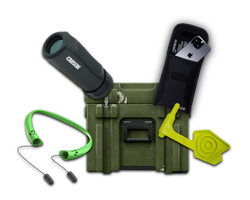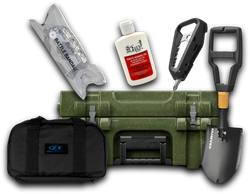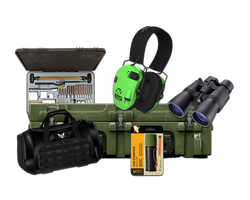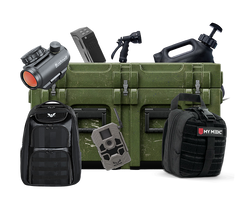How to Restore a Pocket Knife: A Comprehensive Guide
Table of Contents
- Introduction
- Understanding Your Pocket Knife
- Tools and Supplies Needed for Restoration
- Step-by-Step Restoration Process
- Maintaining Your Restored Pocket Knife
- Conclusion
- FAQ
Introduction
Have you ever stumbled upon an old pocket knife, perhaps one that belonged to a relative or a vintage piece you found at a flea market? These knives often tell a story, holding memories and craftsmanship from a time gone by. However, many of these treasures may be rusty, dirty, and dull, leaving you unsure of how to restore them to their former glory.
In fact, pocket knives have been a part of human history for centuries, evolving in design and functionality. From being essential tools for tradesmen and adventurers to becoming popular collectibles, the significance of pocket knives is undeniable. Yet, with time, wear and tear can diminish their appearance and usability.
This blog post aims to guide you through the process of restoring a pocket knife, ensuring it not only looks good but also performs well. By the end of this article, you'll be equipped with the knowledge and techniques needed to bring your pocket knife back to life, regardless of its condition.
We will cover everything from understanding your knife to the specific tools and techniques you will need for a successful restoration. Furthermore, we'll touch upon the importance of maintaining your restored knife, keeping it ready for use or display. Whether you're a seasoned knife enthusiast or a newbie, this guide will provide valuable insights into the art of restoration.
Understanding Your Pocket Knife
Before diving into the restoration process, it's crucial to familiarize yourself with your pocket knife. Each knife is unique, with its own history, design elements, and materials. Here are some essential aspects to consider:
1. Identify the Knife Type and Manufacturer
Knowing what type of pocket knife you have is vital for understanding how to restore it properly. Look for any identifying marks, shields, or engravings on the blade or handle. These can indicate the manufacturer, model, and even the year it was made. If your knife is particularly old or rare, researching its background can enhance your restoration experience and add to its value.
2. Assess the Condition
Take a close look at the knife to determine its condition. Pay attention to the following areas:
- Blade: Look for rust, scratches, or dullness.
- Handle: Check for cracks, missing pieces, or loose scales.
- Hinges: Ensure they are functioning smoothly without excessive play.
Assessing the condition will help you identify the specific restoration needs and determine the tools required for the job.
3. Understand the Materials
Pocket knives are typically made from various materials, including stainless steel, carbon steel, brass, plastic, and wood. Understanding these materials will guide your choice of cleaning agents and restoration techniques, as different materials require different approaches.
Tools and Supplies Needed for Restoration
To successfully restore your pocket knife, you'll need a specific set of tools and supplies. Below is a comprehensive list of what you'll need:
Essential Tools
- Wet/Dry Sandpaper: Ideal for smoothing out scratches and removing rust. Recommended grits include 320, 400, and 1000.
- Brass Brush: Useful for cleaning hinges and intricate areas without scratching the metal.
- Cleaning Cloths: Soft cloths for wiping down the knife and applying polish.
- Penetrating Oil: This is essential for loosening rusted parts and ensuring smooth movement in the hinge.
- Metal Polish: For giving your knife a final shine after cleaning.
- Knife Sharpener: Essential for restoring the blade’s edge after cleaning.
Optional Tools
- Dremel Tool: For more extensive rust removal or polishing, especially in hard-to-reach areas.
- Old Toothbrush: Great for scrubbing dirt and debris out of crevices.
- Cotton Swabs: Useful for applying oil and cleaning tight spaces.
- Mineral Oil: For soaking wooden handles or lubricating the knife after restoration.
Step-by-Step Restoration Process
Now that you have a solid understanding of your knife and gathered the necessary tools, it's time to begin the restoration process. Follow these steps for a successful outcome:
Step 1: Initial Cleaning
Start by giving your knife a thorough wipe-down. Use a damp cloth or an old toothbrush to remove loose dirt and grime. This initial cleaning will help you better assess the areas that need attention.
Step 2: Apply Penetrating Oil
Spray penetrating oil on the joint areas of the knife, particularly where the blades pivot. This will help loosen any rust or grime buildup. Let it soak for a few minutes, then gently wipe away the excess oil with a clean cloth.
Step 3: Remove Rust and Grime
With your wet/dry sandpaper, start with the coarse grit (320) and work your way to finer grits (400 and 1000). Dampen the sandpaper with penetrating oil or water to reduce friction and prevent further damage to the blade.
- For the Blade: Work in small circular motions, focusing on areas with visible rust. Regularly wipe the blade with a cloth to check your progress.
- For the Hinge: Use a brass brush to clean the hinge area, ensuring that any debris is removed. Be gentle to avoid scratching the metal.
Step 4: Final Cleaning
Once you've removed the rust and grime, wipe down the entire knife with a clean cloth to remove any remaining oil or residue. This step is crucial to ensure that the knife is free from contaminants before polishing.
Step 5: Sharpening the Blade
Using your knife sharpener, restore the blade to its optimal sharpness. Follow the manufacturer's instructions for your specific sharpener, or refer to our guide on how to sharpen a pocket knife for detailed techniques.
Step 6: Polishing
After sharpening, apply metal polish to the blade and any metal parts of the knife. Use a soft cloth to buff the surface until it shines. This final touch not only enhances the appearance but also offers a layer of protection against rust.
Step 7: Handle Restoration (if needed)
If the handle requires restoration, consider the material:
- Wood: Lightly sand and apply mineral oil to nourish the wood and enhance its appearance.
- Plastic: Clean with soap and water, avoiding harsh chemicals that could damage the material.
- Metal: Polish as you would with the blade, being cautious not to scratch any decorative elements.
Step 8: Reassemble and Lubricate
Once all parts are clean and polished, reassemble the knife if you've disassembled it during the process. Apply a few drops of lubricant to the hinges to ensure smooth operation.
Maintaining Your Restored Pocket Knife
Restoring a pocket knife is only the beginning; maintaining it is equally important. Here are some tips to keep your knife in prime condition:
- Regular Cleaning: After each use, wipe down your knife to remove moisture and debris.
- Lubricate Moving Parts: Apply oil to the hinges periodically to ensure smooth operation.
- Store Properly: Keep your knife in a dry place, ideally in a case or pouch to protect it from scratches and moisture.
Conclusion
Restoring a pocket knife is not just about cleaning; it's about reviving a piece of history and ensuring it remains functional for years to come. By following the steps outlined in this guide, you can bring life back to an old knife, whether it's a treasured heirloom or a vintage find.
Embrace the process, enjoy the craftsmanship, and remember that every scratch and imperfection tells a story. If you're looking to expand your gear for your next restoration project, consider exploring Crate Club's subscription services, which offer a curated selection of tactical gear and survival tools delivered monthly. Check out the Crate Club Subscription Services for more information.
For those interested in purchasing quality tactical gear, visit the Crate Club Shop for a wide range of products.
FAQ
Q: How often should I clean my pocket knife?
A: It’s best to clean your pocket knife after each use, especially if it’s been exposed to moisture or dirt. Regular maintenance will prolong its life and functionality.
Q: Can I use regular sandpaper for rust removal?
A: While you can use regular sandpaper, wet/dry sandpaper is recommended as it reduces friction and minimizes the risk of scratching the blade.
Q: Is it necessary to sharpen the blade after cleaning?
A: Yes, sharpening the blade is essential as cleaning can dull the edge. A sharp blade is crucial for both functionality and safety.
Q: What should I do if my knife has a broken handle?
A: Depending on the material, you may be able to replace or repair the handle. For wooden handles, consider sanding and refinishing; for plastic, you might need to replace it entirely.
Q: Can I restore a pocket knife that is heavily rusted?
A: Yes, heavily rusted knives can often be restored, but it may require more time and care. Follow the recommended techniques, and be patient during the process.
With this guide in hand, you are well on your way to becoming a pocket knife restoration expert. Enjoy the journey and the satisfaction of bringing a piece of history back to life!
Share this article



